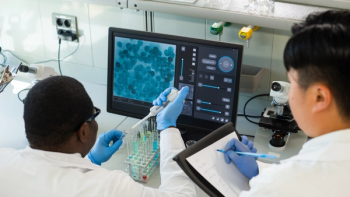
Transforming Clinicians into Industry Leaders
Could physician behavior have a positive impact on Drug Development?
Many physicians have successfully navigated their way from clinical practice to the pharmaceutical sector, serving in positions ranging from entry-level medical director to CEO. But others have stumbled while making the transition from clinical caregiver to leader in the corporate realm.
Most would agree that physicians are, by and large, smart people with good work habits. But the behaviors that are sought after and rewarded in clinical or academic environments are not exactly the same behaviors one looks for in the realm of drug development.
While behavioral competency models-detailed pictures of the behaviors that define outstanding medical directors-exist for jobs across all business sectors, few pharmaceutical companies have developed competency models aligning the drug development process with behaviors that are expected of physicians serving in a management capacity in R&D functions. If more emphasis were placed on identifying and articulating behaviors that predict future success, causing greater collaboration and inspired teamwork, we might see a higher level of productivity and a greater number of drug candidates submitted for approval.
Now, a few forward-thinking pharma and biotech organizations have begun to build out competency models, along with developmental roadmaps, to help physicians learn new behaviors and gain the emotional intelligence that research suggests goes hand-in-hand with success in the pharmaceutical sphere.
Emotional intelligence: A Leadership Asset
Physicians who have made the transition from academia or clinical practice to industry tend to possess competencies associated with high emotional intelligence. In addition to strong medical and scientific knowledge, these physicians are highly self-aware-cognizant of the effect their behavior has on others in their environment.
Everyone knows the classic stereotype of the doctor working in an emergency room or an operating room, making split-second decisions, barking out orders, and dispensing with social niceties. In the pharmaceutical industry, however, those behaviors are not conducive to success. It’s critical for physicians serving as medical directors in industry to display a different set of behaviors. In an industry setting, active listening, empathy, and respect for other people’s ideas-lessons learned in childhood but not necessarily honed during medical training-are not only valued, but expected. These behaviors support considered and insightful decision-making.
One example of a successful transition from the clinical to the corporate world is Daniel Vasella, MD, chairman and CEO of Novartis AG. Initially trained as a psychiatrist and psychoanalyst, Vasella was named the most influential European businessman of the past quarter century in a 2004 Financial Times readership survey.
In a 2003 interview with the Harvard Business School student weekly, Vasella said, “First of all, I believe that the corporate world can be a fantastic experience, and what you can learn from others across cultures and countries and businesses is incredibly enriching. Second, I think, if one enters into a profession, one needs to be competent and rooted in one area. You may be very good in a specific area, but for more general management or for leading groups, interpersonal skills become very important-more important than technical skills. So I would say do everything you can in order to get to know yourself, how you react and what your strengths and weaknesses are and then work on your interpersonal skills.”
Vasella has credited his own work as a therapist as a contributing factor to his success in the pharmaceutical industry. “It gave me the self-assurance to be self-determined rather than determined by circumstances.”
Although Vasella’s ability to self-reflect, balance the rational and emotional elements of decision-making, and take other points of view into account may be attributed to his training as a psychoanalyst, aspiring medical directors need not spend four years on a psychoanalyst’s couch.
Prior to becoming president and CEO of Millennium Pharmaceuticals, Deborah Dunsire, MD, led the Novartis US Oncology Business, playing a critical role in the broad development and successful launch of numerous products. She also managed the merger and significant growth of the combined Sandoz Pharmaceuticals and Ciba-Geigy oncology businesses, and evaluated and implemented key business development initiatives.
Earlier in her career, Dunsire, who today is widely acknowledged as an industry thought leader, was a clinical researcher responsible for studies across multiple therapeutic areas such as immunology, endocrinology, neurology, dermatology, oncology and transplantation. Prior to her senior role at Millennium, Dunsire was winner of the 2001 American Cancer Society Excalibur Award. She is widely admired for her ability to collaborate with other industry leaders, see the potential for good strategic fits, and forge partnerships with other pharmaceutical companies.
Extending the Vision
Key technical competencies for medical directors such as an MD degree, a strong clinical foundation, knowledge of drug development, a research orientation, project management experience, and written and verbal skills are relatively easy to define. Not so apparent are underlying behavioral competencies that are more often the predictors of success in the role. A competency model for medical directors defines the critical behavioral competencies such as delivering scientific and medical insight, building credibility internally, inspiring people, and driving the business. It is one thing to commit oneself to healing (or at least doing no harm to) patients in a clinical setting. But it’s quite another to extend that vision of healing and take a longer view of a physician’s responsibilities in the development of drugs–and considering a physician’s behavioral skills in a new and relevant context.
The behavioral competency model describes behaviors that allow medical directors to further their clinical understanding and develop strategies that result in successful new therapies. Examples of these competencies include a passion to address unmet medical needs with a far-ranging impact on patients, a love of learning, a drive to search for new insights, and the ability to recognize patterns and translate complex findings into meaningful conclusions. In short, it’s all about the ability to influence R&D’s scope and direction by balancing technical expertise with interpersonal skills.
Building internal credibility in a corporate environment requires skills and behaviors that often differ radically from building credibility in a clinical setting. The former requires demonstrating respect for other people’s input and expertise. That often means reaching out, being an active listener, showing adaptability, and collaborating cross-functionally. It requires knowing how to “speak one’s mind” without alienating people, and simultaneously listening to other points of view.
One biopharmaceutical company, when faced with a “revolving door” high turnover rate among its MDs, developed a behavioral competency model for medical directors. Using it as a tool, the organization–and others at the vanguard of the pharmaceutical and biotech sectors–is now positioned to make better recruitment and hiring decisions and has a clear direction on the development and retention of physicians.
This particular competency model takes into account that different physicians will exhibit different levels of the desired behaviors based on their personalities, life experiences, and experience working in corporate settings. Competency models–which had been used for other functions at the biopharmaceutical company before the chief medical officer recognized the value of creating one specifically for medical directors–segments medical directors by their years of industrial experience (less than five years, five-10 years, and more than 10 years), and defines the minimum and target levels of behavior required. For example, in the model, under “Driving the Business,” medical directors with less than five years of experience are expected to understand the business context, set standards, and measure performance. Those with five to 10 years should additionally be driving business goals and acting with a sense of urgency to make improvements. And those with more than 10 years of experience ought to be having an impact on the prioritization and specification of goals and making wise choices on when to move forward or halt a project.
Using this competency model as a tool, the company is making wiser choices, hiring medical directors based on their fit into the corporate culture, and their demonstration of the sought-after behavioral competencies. After one year, the company asked an outside academic institution to deploy a team effectiveness scorecard. The results were very favorable, and indeed better than benchmarked peer group data, in part due to the focus and development of behaviors articulated in the competency model.
The model provides a common framework and language, and helps outline a career path by highlighting opportunities for focused, measurable development through coaching, feedback, leadership training, and evaluation. But hiring is only half the story.
Fulfilling the Industry’s Promise
While no one can ever know, it’s tempting to wonder how many physicians might have made more significant contributions to drug development in the past had they been provided a new context in which to work-one where they were evaluated and rewarded for collaboration or, for example, taking in other points of view before making a decision, or showing respect to everyone in their environment.
Although he does not make much mention of the behaviors that happen to be described in the medical director competency model, in his book, Science Business and in numerous articles, writer Gary P. Pisano has described the conundrum faced by many pharma and biotech companies when they hire physicians with strong clinical competencies.
The lack of competency models is perhaps one of the “gaps” and may be one reason why, according to Pisano, “biotech has yet to fulfill its promise to shareholders.”
Based on our experience working with and for the pharmaceutical industry, we believe that a robust competency model for medical directors, similar to competency models designed for other positions in other functions, encourages and rewards the right behaviors. It is an invaluable tool for hiring, developing, and retaining physicians who possess–or are able to develop–the competencies that will enable the pharmaceutical industry to unleash the hitherto untapped potential of the drug development process.
Newsletter
Lead with insight with the Pharmaceutical Executive newsletter, featuring strategic analysis, leadership trends, and market intelligence for biopharma decision-makers.




